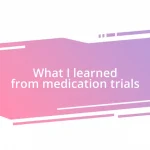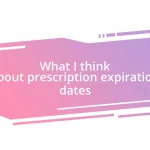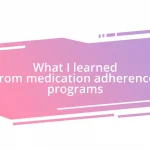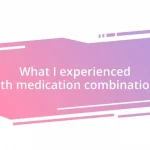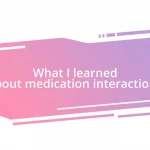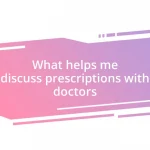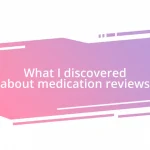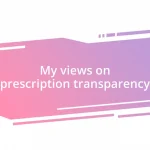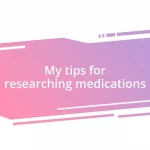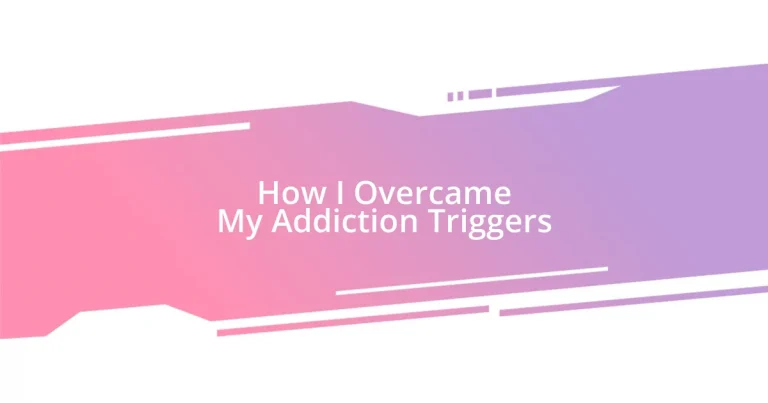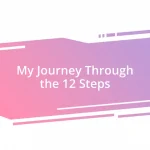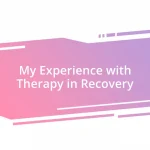Key takeaways:
- Understanding and identifying personal addiction triggers—emotional, environmental, and social—is crucial for managing cravings and fostering recovery.
- Developing effective coping strategies, such as deep breathing, mindfulness, and creative outlets, empowers individuals to handle triggers positively.
- Building a supportive network and reflecting on personal progress enhances resilience and encourages a compassionate approach to setbacks during the recovery journey.
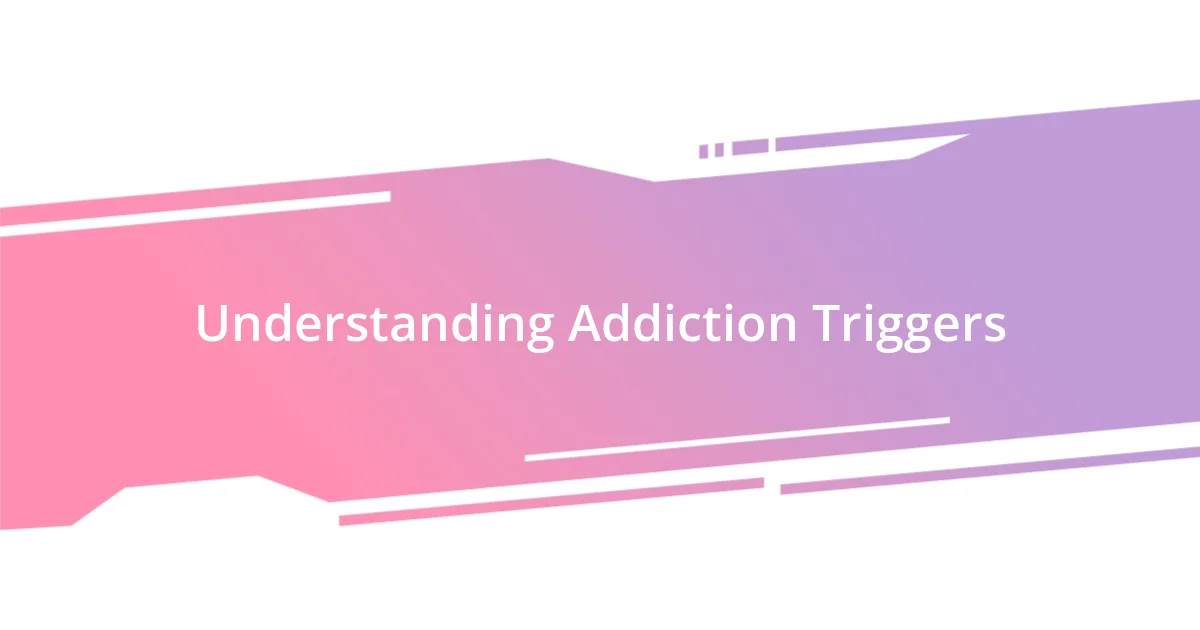
Understanding Addiction Triggers
Understanding addiction triggers starts with recognizing that they can come from various sources. For me, it was often tied to my emotional state—stress would send me spiraling into old habits. I’ve learned to ask myself, “What feelings or situations typically lead me back to my addiction?” This reflection can be eye-opening.
Certain environments also play a significant role; places where I once felt a rush of excitement can trigger that craving. I remember walking past a bar where I used to hang out, and I felt that familiar pull. It made me realize that physical spaces are just as powerful as emotional triggers, don’t you think?
Identifying these triggers has been a journey of self-discovery. I often find myself journaling my thoughts after encountering a challenging situation. This practice helps me understand my patterns and develop healthier coping mechanisms. How do you respond when faced with triggers? Exploring your own reactions can be a key step in overcoming them.
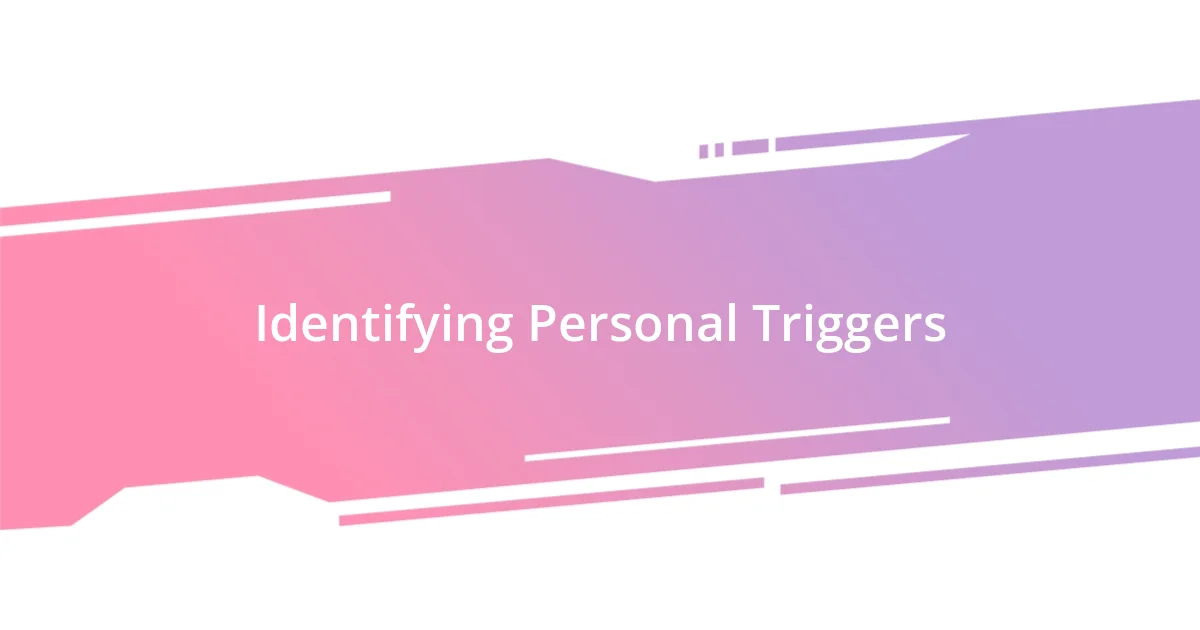
Identifying Personal Triggers
Identifying personal triggers was one of the hardest yet most rewarding parts of my journey. I recall an afternoon when a sudden wave of sadness hit me, and I realized that loneliness was one of my biggest triggers. That silence in my home felt deafening, and I craved the familiarity of my old habits. Recognizing this moment allowed me to take proactive steps, like reaching out to a friend or joining a support group instead.
As I reflect on different situations, I realized that certain social gatherings can be a double-edged sword. Attending a celebration of a friend’s success reminded me of times when I celebrated with substances. The taste of that moment brought back old feelings, igniting cravings I thought I had buried. It made me acutely aware of how powerful social contexts could be in triggering my past behavior.
The process of mapping out my triggers has been transformative. I now keep a simple list of situations, emotions, and places that can send me spiraling. It’s like having a roadmap for my recovery. When I feel the urge creeping in, I look at my list and remind myself of the alternatives I’ve found – whether it’s taking a walk, practicing mindfulness, or connecting with my support system. Seeing these changes in action motivates me to stay on a healthier path.
| Trigger Type | Examples |
|---|---|
| Emotional | Sadness, loneliness, stress |
| Environmental | Bars, old hangout spots, specific cities |
| Social | Parties, gatherings, celebrations |
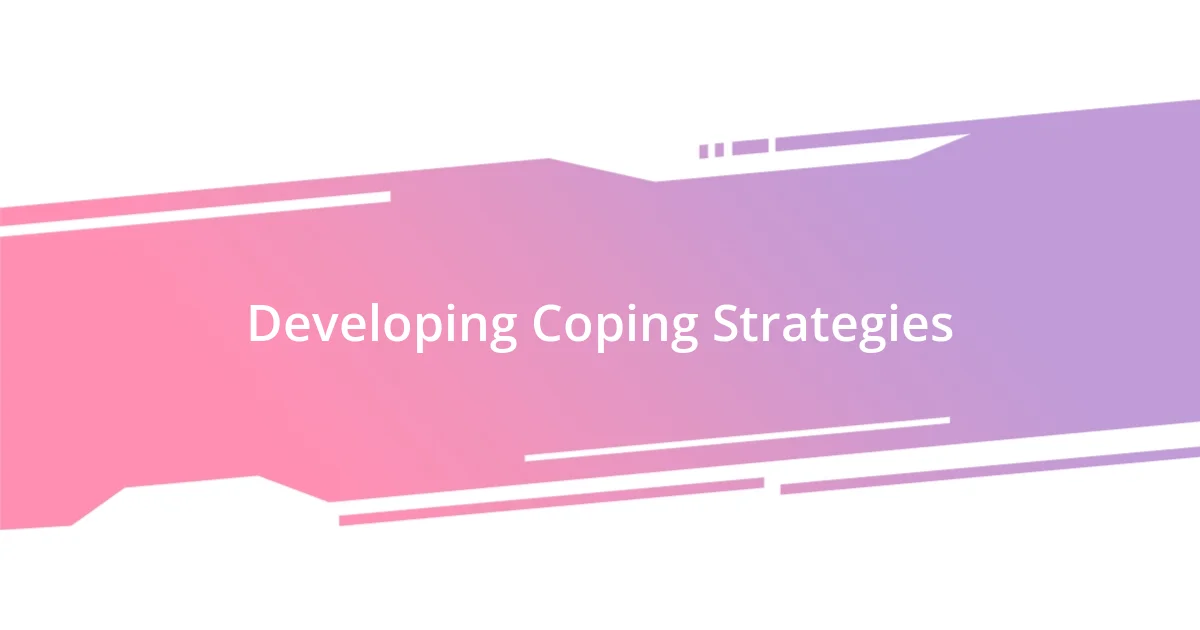
Developing Coping Strategies
Developing effective coping strategies has been crucial in my quest to manage addiction triggers. I once found myself stuck in a cycle of stress-induced cravings, feeling overwhelmed without knowing how to break free. Over time, I discovered that immersing myself in creative outlets, like painting or writing, provided an emotional release and helped me process those feelings instead of succumbing to old habits.
Here are some strategies that have worked for me:
- Deep Breathing: When cravings strike, I take a moment to breathe deeply, focusing on each inhale and exhale. This simple technique brings instant calm.
- Physical Activity: Exercise has been a game-changer. A brisk walk or a few minutes of yoga rejuvenate my spirit and deter the urge to indulge.
- Mindful Journaling: I often jot down my thoughts during hard moments. It’s a way to externalize my feelings and reflect on healthier choices.
- Setting Boundaries: I’ve learned to distance myself from certain environments and situations that could trigger cravings. Saying no to gatherings where old habits are prevalent has been liberating.
- Reaching Out: Connecting with supportive friends during tough times reminds me of my progress and helps quell feelings of isolation.
Sometimes, I simply take a moment to remind myself of my goals. Visualizing my life without addiction fuelled my determination to stay on a positive path. It’s reassuring to acknowledge that these coping mechanisms create a buffer against the triggers, allowing me to reclaim my life.
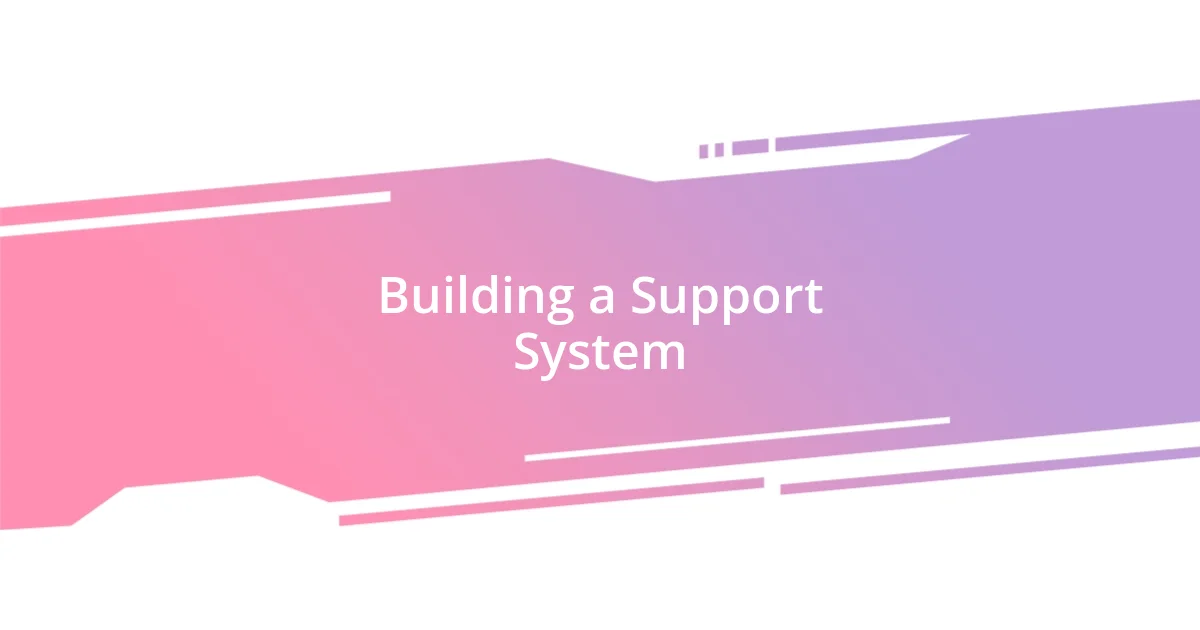
Building a Support System
Building a support system has been one of the most significant steps in my journey. Initially, I hesitated to reach out; the fear of judgment loomed large. However, I discovered that sharing my struggles with trusted friends was liberating. One evening, as I sat with a close friend over coffee, I opened up about my triggers. Her empathy not only eased my anxiety but also reminded me that I wasn’t alone in this battle.
I learned the value of surrounding myself with individuals who truly understood my journey. I vividly remember the first support group meeting I attended. Admittedly, I was nervous, but hearing others share their experiences made a profound impact on me. It was a safe space where we could discuss our successes and setbacks without fear of criticism. Connecting with people facing similar challenges helped me feel a sense of belonging that I craved, replacing the loneliness that once haunted me.
Having a reliable support system means being proactive in maintaining those connections. I prioritize scheduling regular catch-ups or check-ins, even when life gets busy. One way I do this is by setting reminders on my phone. My friends and I exchange messages of encouragement, which acts as a buffer against cravings. Have you ever reached out just to vent or ask for support? I’ve found that these small interactions play a crucial role in preventing me from slipping back into old habits. Reaching out for help isn’t a sign of weakness; it’s a testament to my strength and commitment to staying on track.
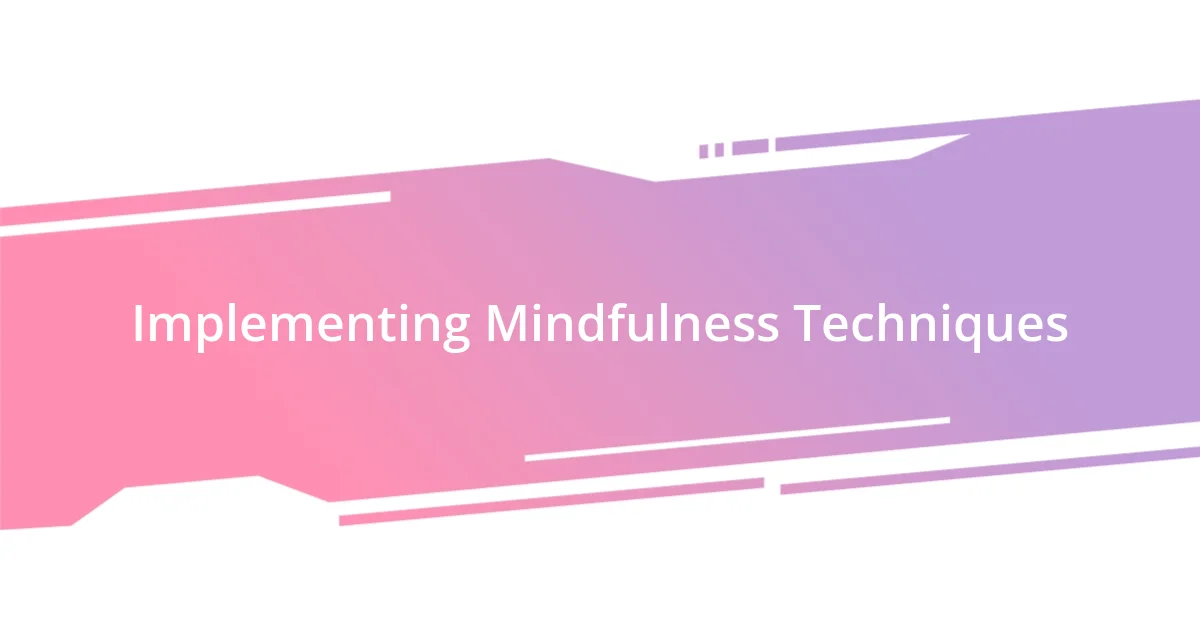
Implementing Mindfulness Techniques
Mindfulness techniques have been a transformative tool in my journey towards overcoming addiction triggers. I vividly recall a moment when cravings engulfed me after a particularly challenging day. Instead of spiraling, I chose to practice a simple technique called grounding. By focusing on my surroundings—listening to the sounds, feeling the textures, and observing the details—I was able to redirect my mind from the urge and into the present moment. Have you ever tried this? The shift in perspective was surprisingly empowering.
One of the most impactful aspects of mindfulness for me has been mindful meditation. I remember sitting quietly in my room, eyes closed, and connecting with my breath. In those moments of stillness, I began to notice how fleeting cravings can be. They may feel urgent, almost suffocating, yet they often pass when we don’t give in to them. This realization brought me a sense of control I hadn’t felt before. I found myself actively watching my thoughts rather than getting lost in them, which sparked a deeper understanding of my triggers.
Incorporating mindfulness into daily routines has made a significant difference as well. Whether during my morning coffee or an evening walk, I practice being fully present. I ask myself, “What do I hear? What do I see? How does my body feel?” These questions ground me, helping to foster an awareness that interrupts the automatic responses to my cravings. It’s more than just a distraction; it’s a method of reconnecting with myself. The journey to mindfulness isn’t always linear, but I cherish every moment of clarity it brings. What about you? Have you found moments of mindfulness that lit a path through your own challenges?
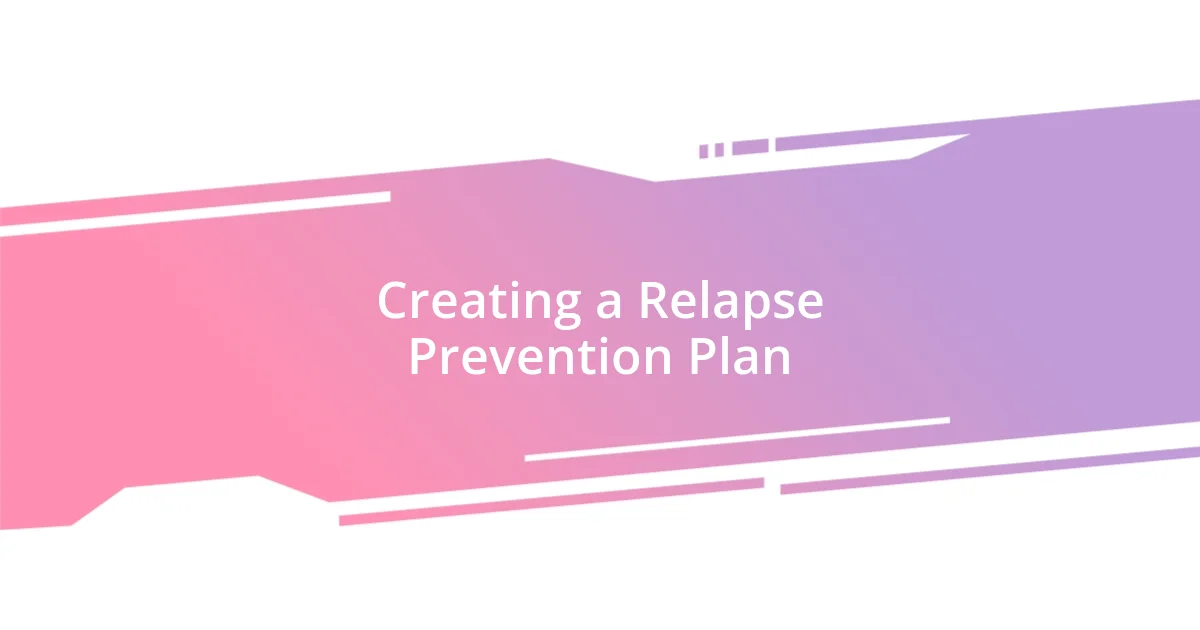
Creating a Relapse Prevention Plan
Creating a relapse prevention plan is essential for staying on track, and I learned this firsthand. I remember when I initially drafted my plan, it felt overwhelming. I started small by identifying specific triggers that could lead to a relapse, which became incredibly revealing. Just acknowledging these triggers was a big step, as it felt like I was finally taking control instead of letting my addiction dictate my life.
One of the most effective strategies I integrated into my plan was scheduling regular self-reflection sessions. These moments of solitude became my safe space to evaluate how I was feeling about my progress. After a particularly tough week, I would sit down with my journal, vulnerable and honest, and I found immense solace in pouring my heart out onto the pages. Have you ever just let your thoughts flow? This practice helped me to not only recognize when I was veering off course but also to celebrate my successes, no matter how small they seemed.
Moreover, I incorporated a list of coping strategies that I could turn to when cravings surfaced. This list ranged from going for a quick walk to calling a friend or indulging in a favorite hobby. One day, during a particularly stressful afternoon, I decided to pick up a paintbrush instead of my phone. It was a simple yet effective choice that shifted my perspective entirely, revealing just how powerful creative expression can be. How do you cope with your triggers? Crafting these tangible responses made my plan feel more actionable and less daunting, allowing me to navigate those moments with greater confidence.
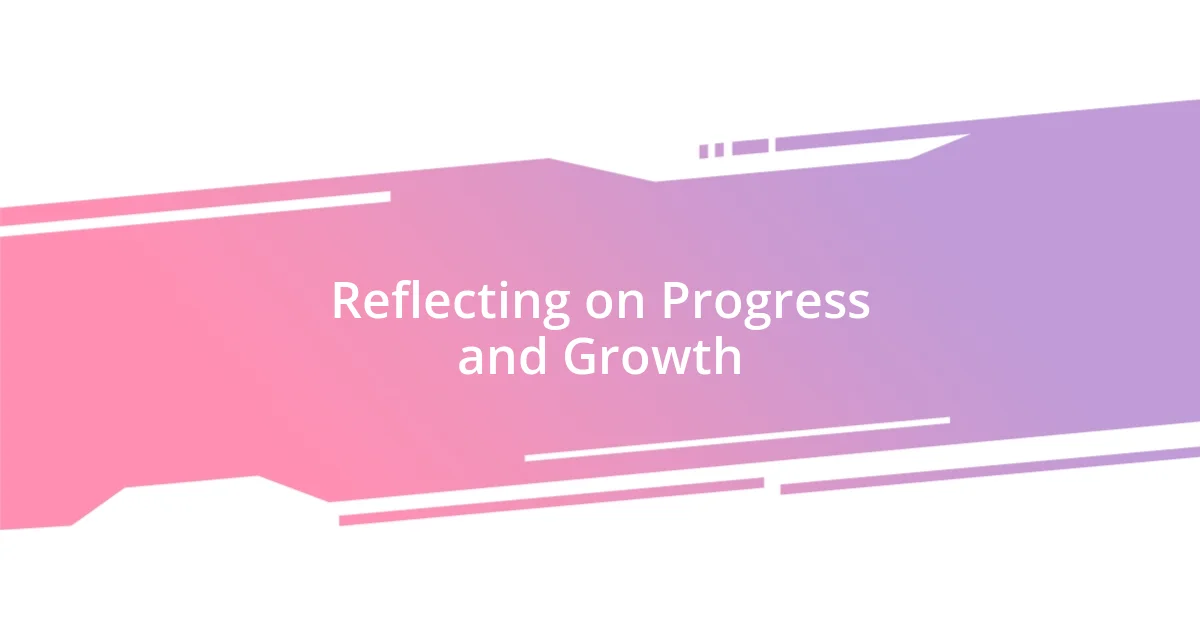
Reflecting on Progress and Growth
Reflecting on my progress has become a cornerstone of my growth. There were times when I felt disheartened, wondering if I’d ever truly overcome my triggers. But now, looking back, I can see the small victories that seemed inconsequential at the time—like resisting a craving once or successfully navigating a social situation without relapsing. These moments may have felt fleeting, but cumulatively, they built a strong foundation for resilience. Have you taken time to acknowledge your own milestones, no matter how small?
I often find myself reminiscing about my early days of recovery, where the path ahead seemed foggy and daunting. One day, I stumbled upon an old journal and was surprised to read about the struggles I faced just a few months prior. Those raw entries captured my fear and uncertainty but also hinted at the burgeoning hope within me. This contrast not only lifted my spirits but rekindled my determination to keep moving forward. How has your journey influenced your perception of personal growth?
Embracing setbacks has also been part of my growth narrative. I recall a challenging period when I slipped back into old habits. Instead of spiraling into despair, I chose to analyze what went wrong and how I could adjust my strategies moving forward. This reflective approach led me to realize that growth isn’t just about a straight line upwards; it’s often a winding road filled with bumps. Recognizing that setbacks can serve as learning experiences has allowed me to view my journey through a lens of compassion rather than judgment. Doesn’t it feel liberating to shift your perspective like that?


